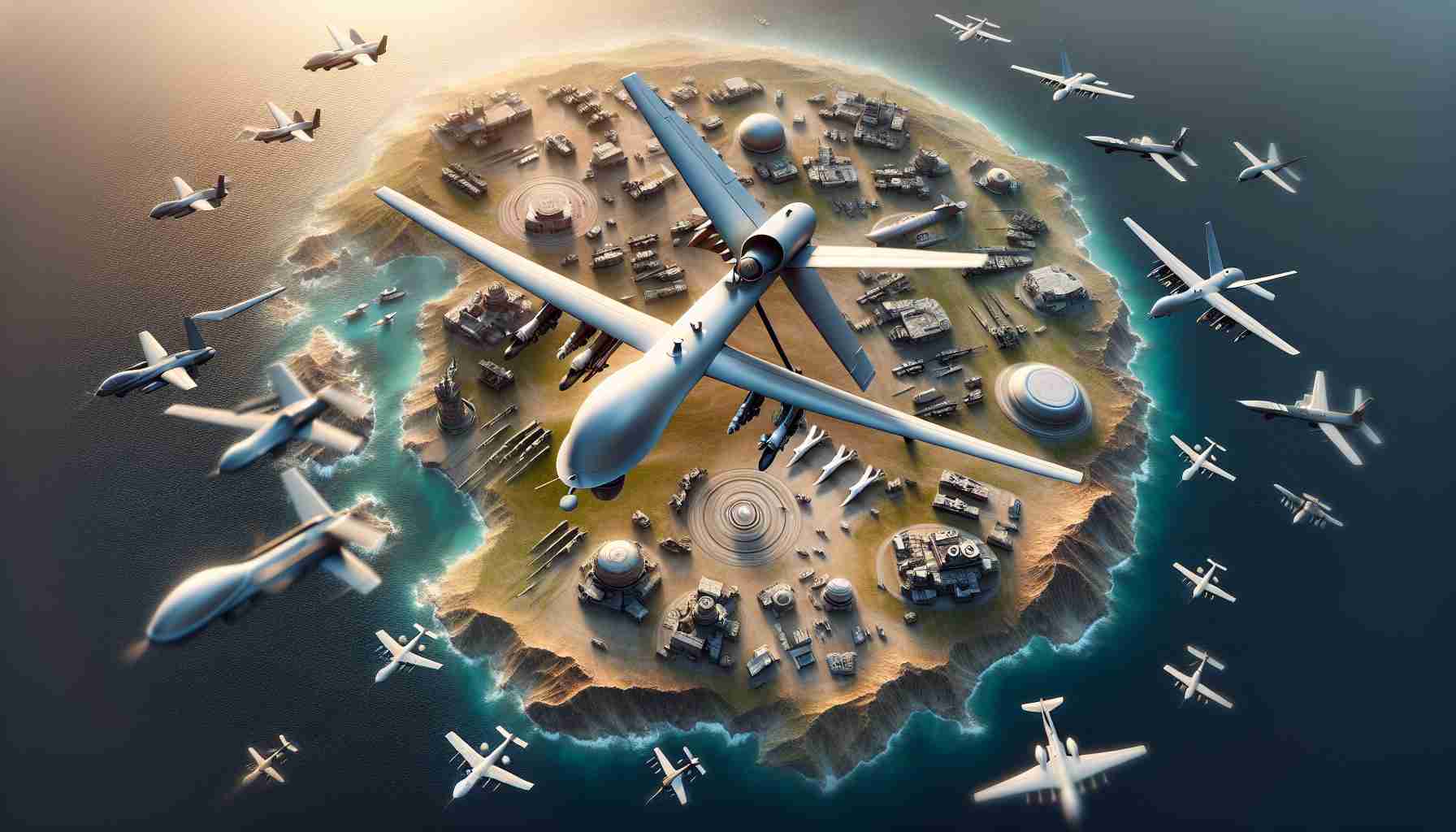- Drones are increasingly appearing over sensitive U.S. military sites, raising concerns about surveillance and espionage.
- Hundreds of drone incursions have been reported, with concerns about foreign adversaries seeking military intelligence.
- There is also a threat from Mexican cartels potentially using drones for attacks against U.S. border security.
- Current defense measures at military installations focus primarily on detection, with many bases lacking the capability to neutralize drone threats.
- Gen. Gregory M. Guillot has urged lawmakers to consider stronger laws and expanded drone defense protocols to better protect all military bases.
- Enhanced legislation, technological advancements, and interagency cooperation are essential to addressing these challenges.
- Effective drone defense is crucial to safeguarding U.S. military secrets and national security in today’s drone-dominated environment.
Skies once reserved for birds and jets now harbor a new visitor—drones. Hovering quietly, they peer down at some of the most sensitive military sites in the United States. The rapidly growing presence of these unmanned aerial vehicles (UAVs) over places like Joint Base Langley and Wright-Patterson has set off alarms within the Department of Defense.
At a Senate Armed Services Committee hearing, Gen. Gregory M. Guillot of NORTHCOM and NORAD spotlighted a chilling reality. Hundreds of drone incursions last year suggest a potential for surveillance and espionage over key military assets. While Guillot remained tight-lipped about who flies these drones, suspicions linger that foreign adversaries could be at play, scanning for weaknesses and strategic blueprints.
The threat isn’t just about prying eyes. In a recent report, concerns rippled through the ranks about Mexican cartels using drones equipped with explosives against U.S. Border Patrol. The apparent gap in the military’s drone defense leaves installations ill-equipped to deal with such dangers. Only a fraction of U.S. bases are empowered to act against drone threats. Many rely on basic electronic measures, focusing more on detection than on neutralization.
Guillot has called on lawmakers to rethink current protocols. More sweeping laws could empower the military to shield all bases, not just the select few, and extend the perimeter where action can be taken against these trespassers. To truly fortify the skies, a blend of tougher legislation, technological upgrades, and enhanced interagency collaboration might be crucial.
The buzzing of drones overhead represents a new chapter in military defense—one that demands urgent attention if America is to keep its secrets and its people safe in this drone-dominated era.
The Invisible Threat: How Drones are Transforming Military Defense
Current Challenges and How-To Defense Strategies
Drones have rapidly evolved from novelty gadgets to formidable tools for surveillance and potential threats to national security. With the increasing number of drone incursions over sensitive military sites, it’s essential to understand the challenges and explore strategic defense mechanisms.
How-To Steps for Combating Drone Threats:
1. Implement Advanced Detection Systems:
– Invest in radar and RF (radio frequency) interception technologies to improve drone detection capabilities.
– Utilize acoustic sensors that can identify drones based on sound signatures.
2. Develop Interception Protocols:
– Establish comprehensive interception protocols, including GPS jamming and drone capture systems using nets.
– Employ electronic warfare systems to neutralize drones without causing collateral damage.
3. Legislative Measures:
– Advocate for expanded legal authority to disable drones that threaten security.
– Collaborate with policymakers to create clear laws that empower military and law enforcement personnel to take decisive action.
Real-World Use Cases and Industry Trends
– Military Bases: Enhanced drone surveillance systems are being tested at select military bases to prepare for any aerial threat.
– Border Security: The use of drones for surveillance by both U.S. border forces and criminal organizations is a significant concern. Efforts are underway to develop drones specifically designed for counter-surveillance and defensive operations.
Market Forecasts & Industry Trends
– Expanding Counter-Drone Technologies: The market for counter-drone technologies is expected to reach $4.5 billion by 2026, highlighting a growing demand for advanced interception and neutralization systems.
Reviews & Comparisons
– Technological Efficacy: Systems like the DedroneTracker are esteemed for their sophisticated detection capabilities but come with high costs and complex integration requirements.
– Portable Versus Stationary Solutions: Portable systems are gaining popularity for their flexibility, whereas stationary systems offer robust, consistent protection for fixed locations.
Controversies & Limitations
– Privacy Concerns: Expanding drone defense systems raises concerns about civilian privacy violations.
– Technological Limitations: High-tech systems may struggle with detecting small or swarming drones, necessitating continuous advancements in technology.
Features, Specs & Pricing
– Detection Systems: Advanced radar systems can detect drones from a range of up to 5 km, with pricing varying from $20,000 to several million dollars based on capabilities and integration complexities.
Security & Sustainability
– Data Security: Protecting the data gathered by drone detection systems from cyber threats is crucial.
– Environmental Impact: Ensuring minimal ecological disruption during drone detection and neutralization efforts.
Insights & Predictions
– Future Threats: As drone technology continues to advance, so will its applications in espionage and warfare, requiring constant innovation in defense strategies.
Tutorials & Compatibility
– Drone Defense Training: Regular training sessions for military personnel on the latest counter-drone technologies will enhance preparedness.
– System Integration: Ensuring compatibility with existing military hardware to enhance defense protocols without requiring complete system overhauls.
Pros & Cons Overview
Pros:
– Enhanced security for sensitive locations.
– Capability to counter potential espionage efforts.
Cons:
– High cost of implementation.
– Potential invasion of civilian airspace creating legal ramifications.
Actionable Recommendations
1. Stay Informed: Keep abreast of the latest developments in drone technology and counter-drone solutions.
2. Engage with Lawmakers: Support initiatives for legislative actions that enhance drone defense capabilities.
3. Invest in Training: Prioritize training for personnel on the use of counter-drone technologies.
By addressing the modern drone threat, the defense infrastructure can be bolstered to protect national security and maintain strategic superiority. For further insights into evolving defense mechanisms, visit Defense.gov.



















